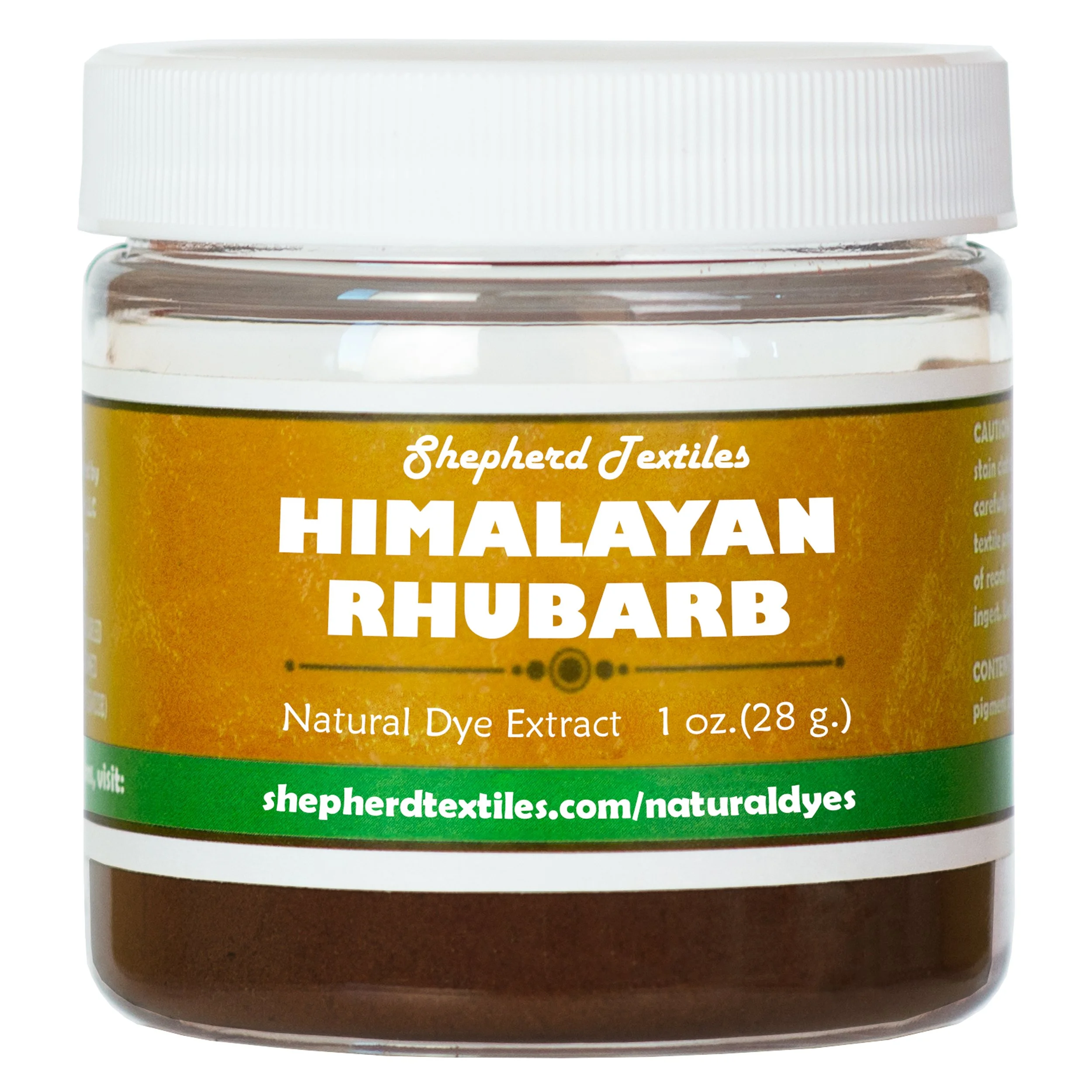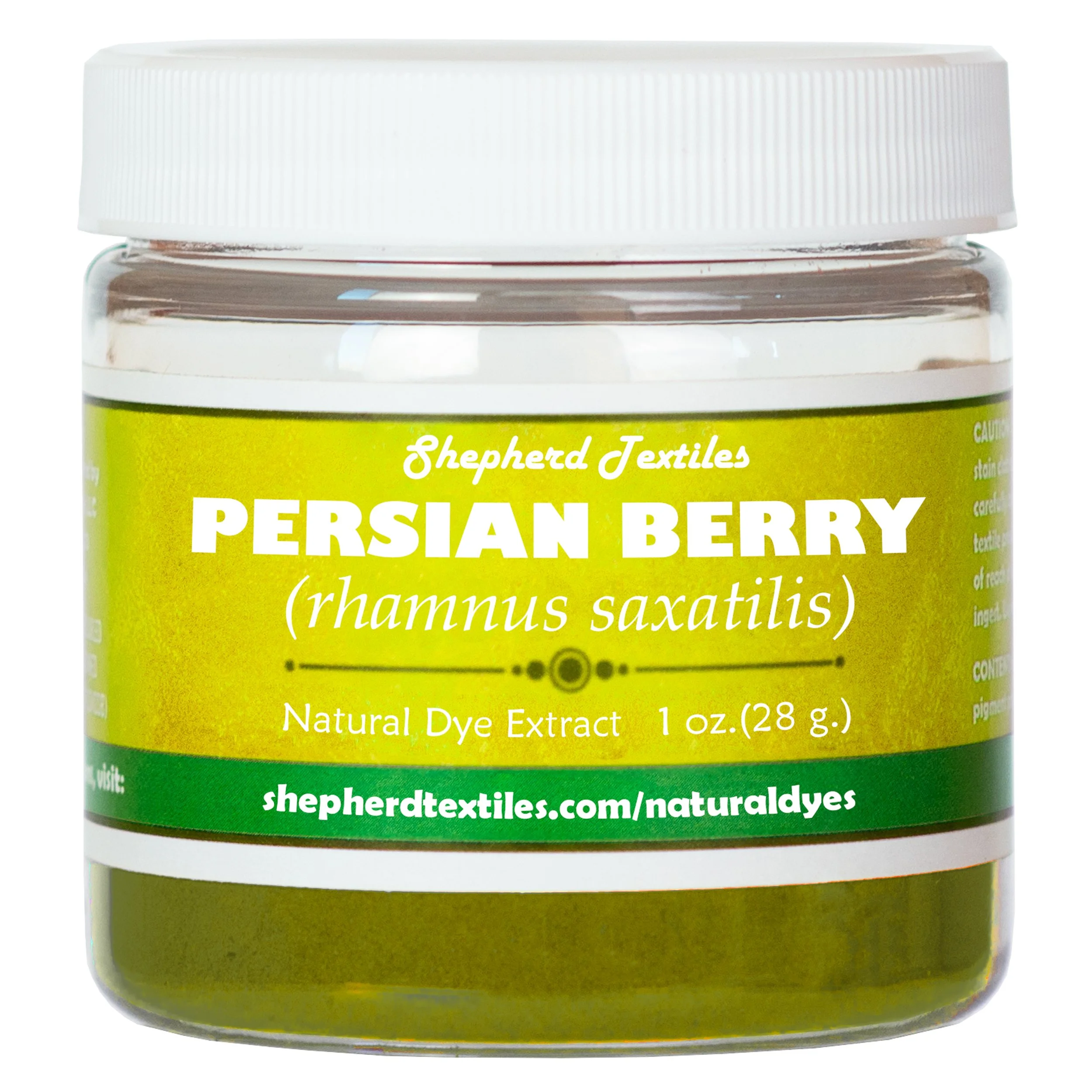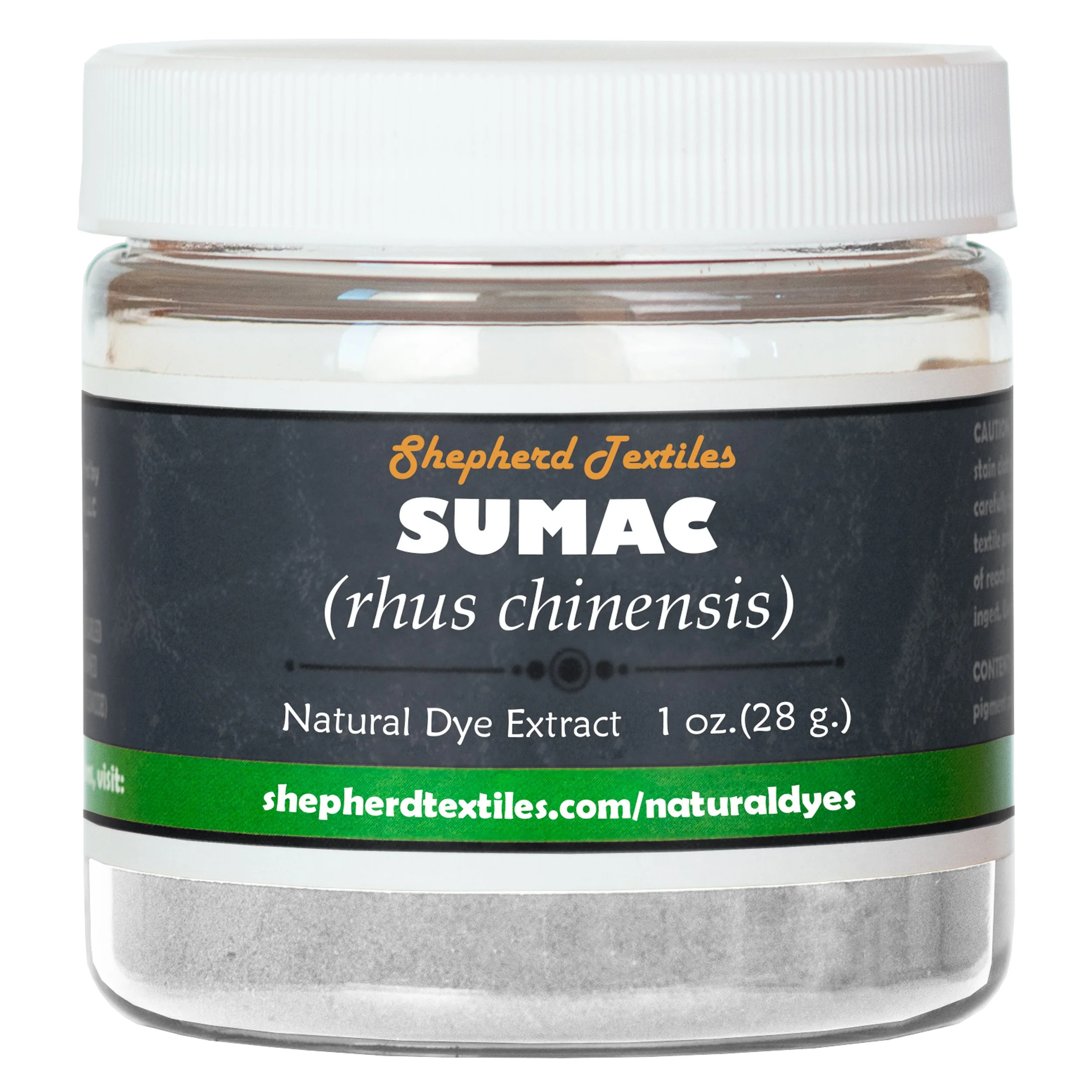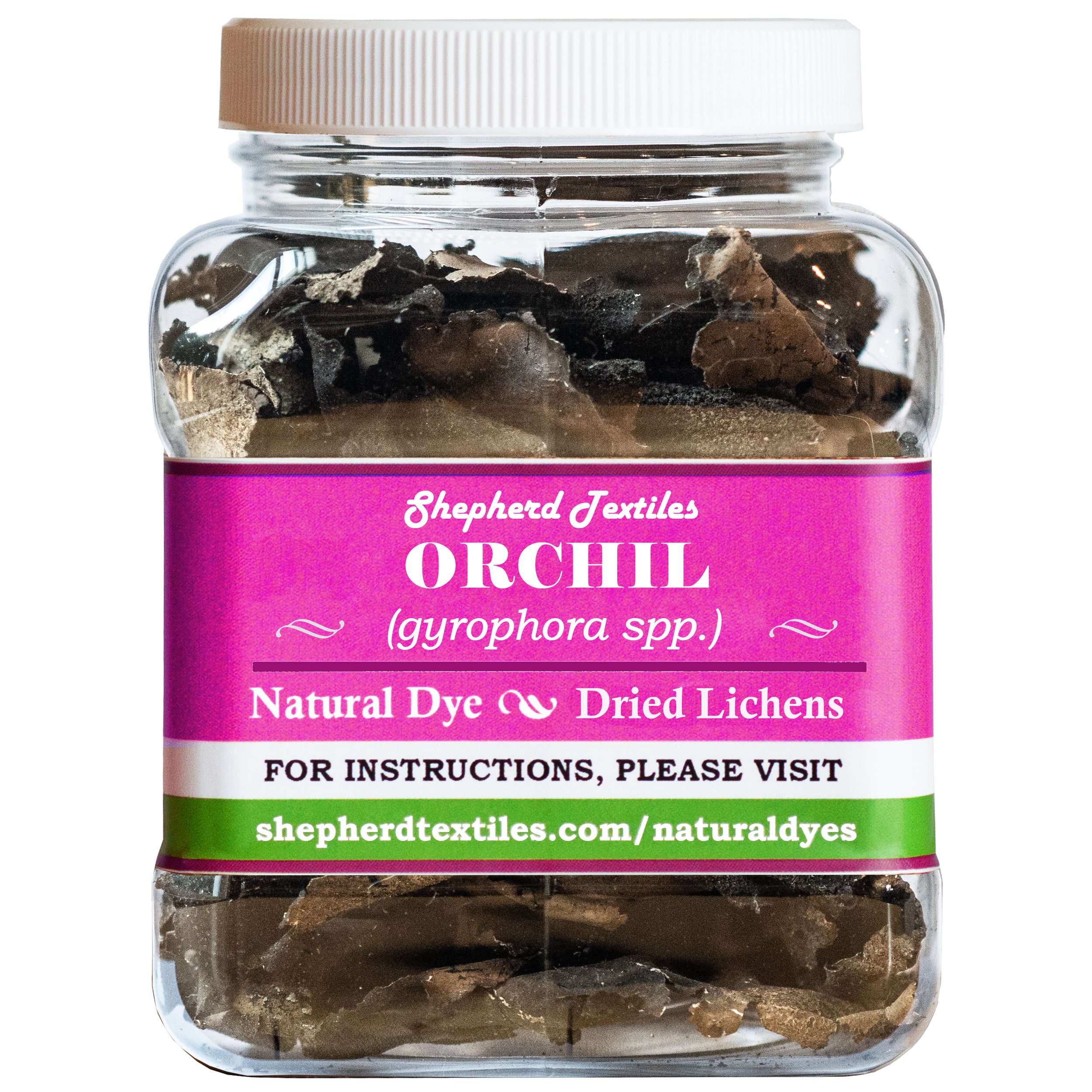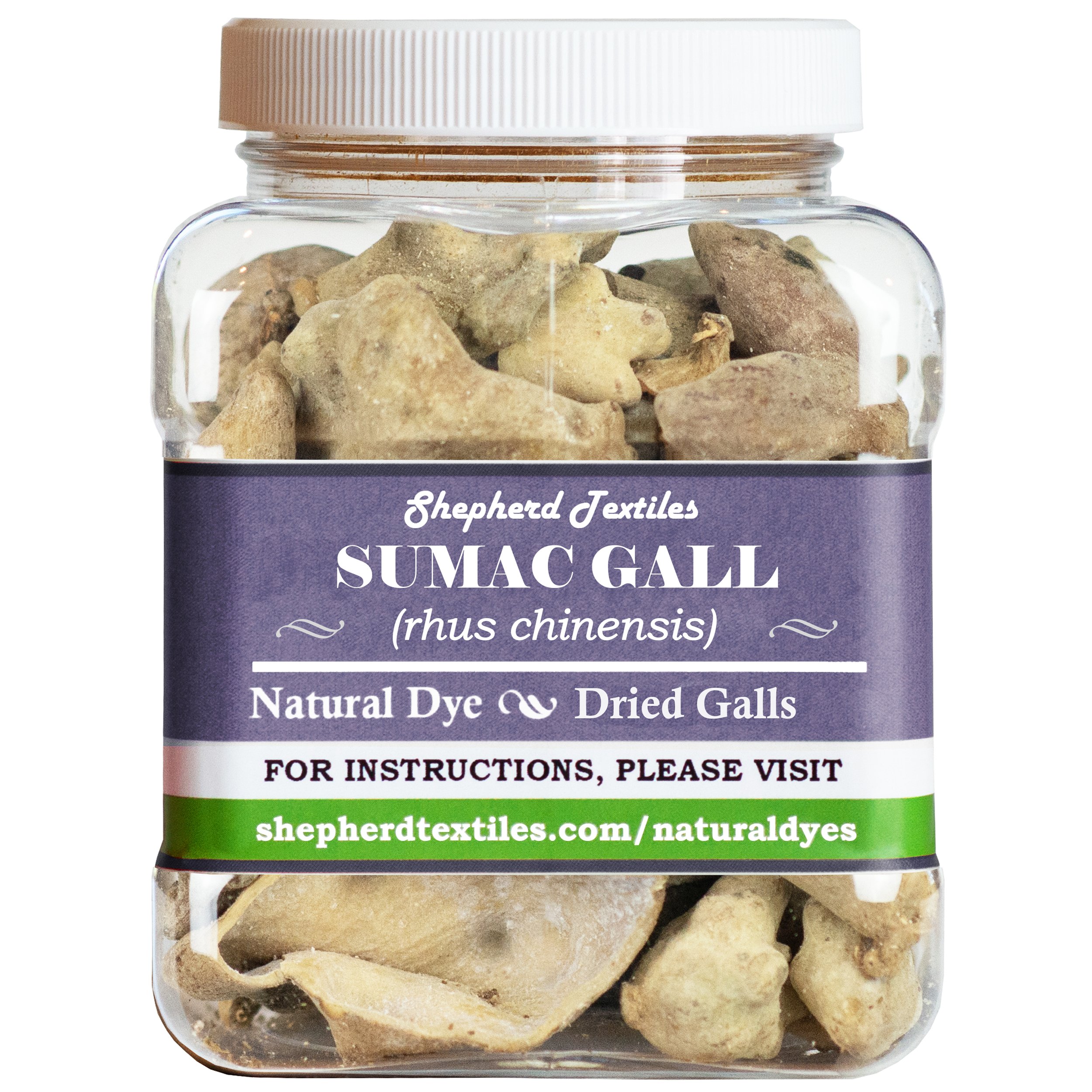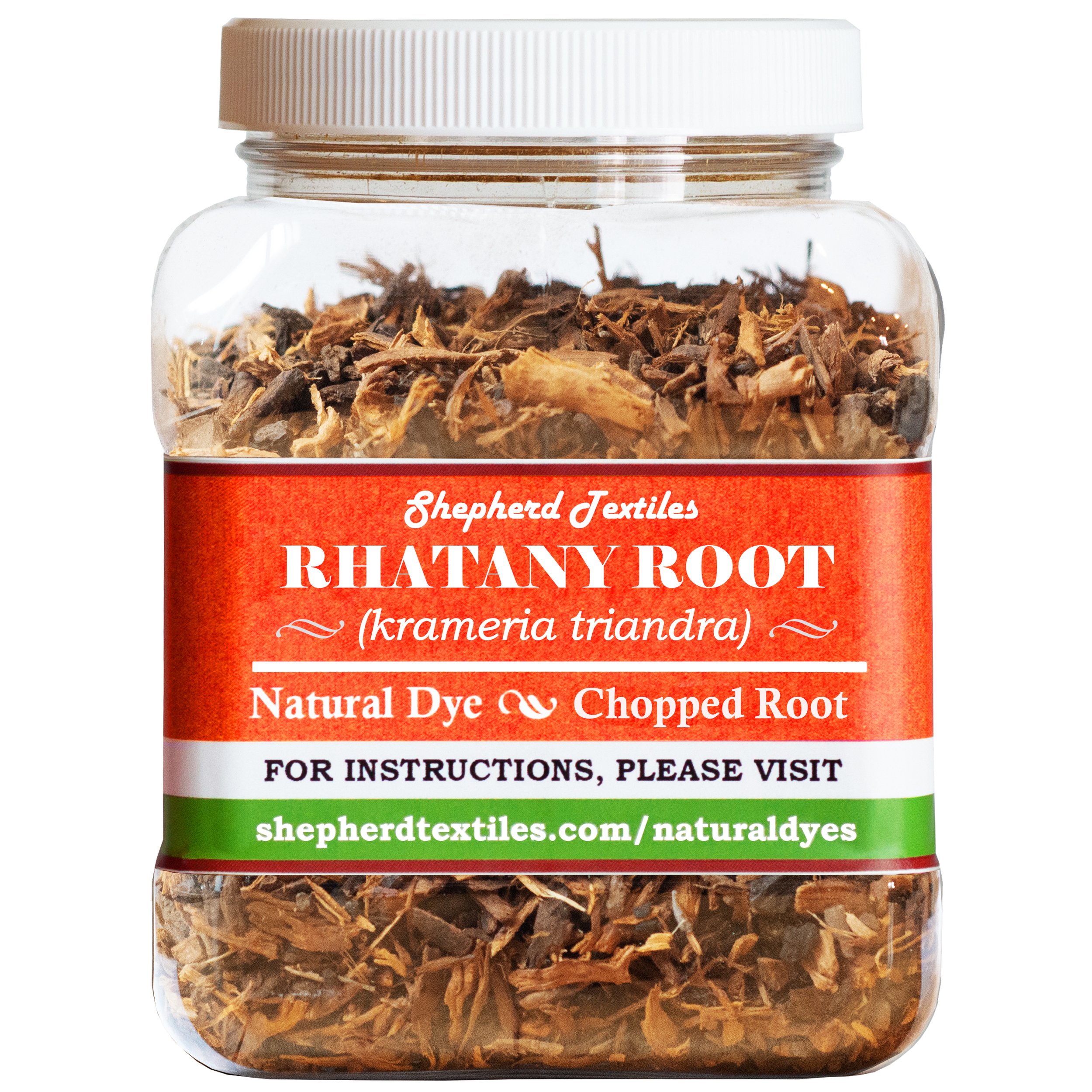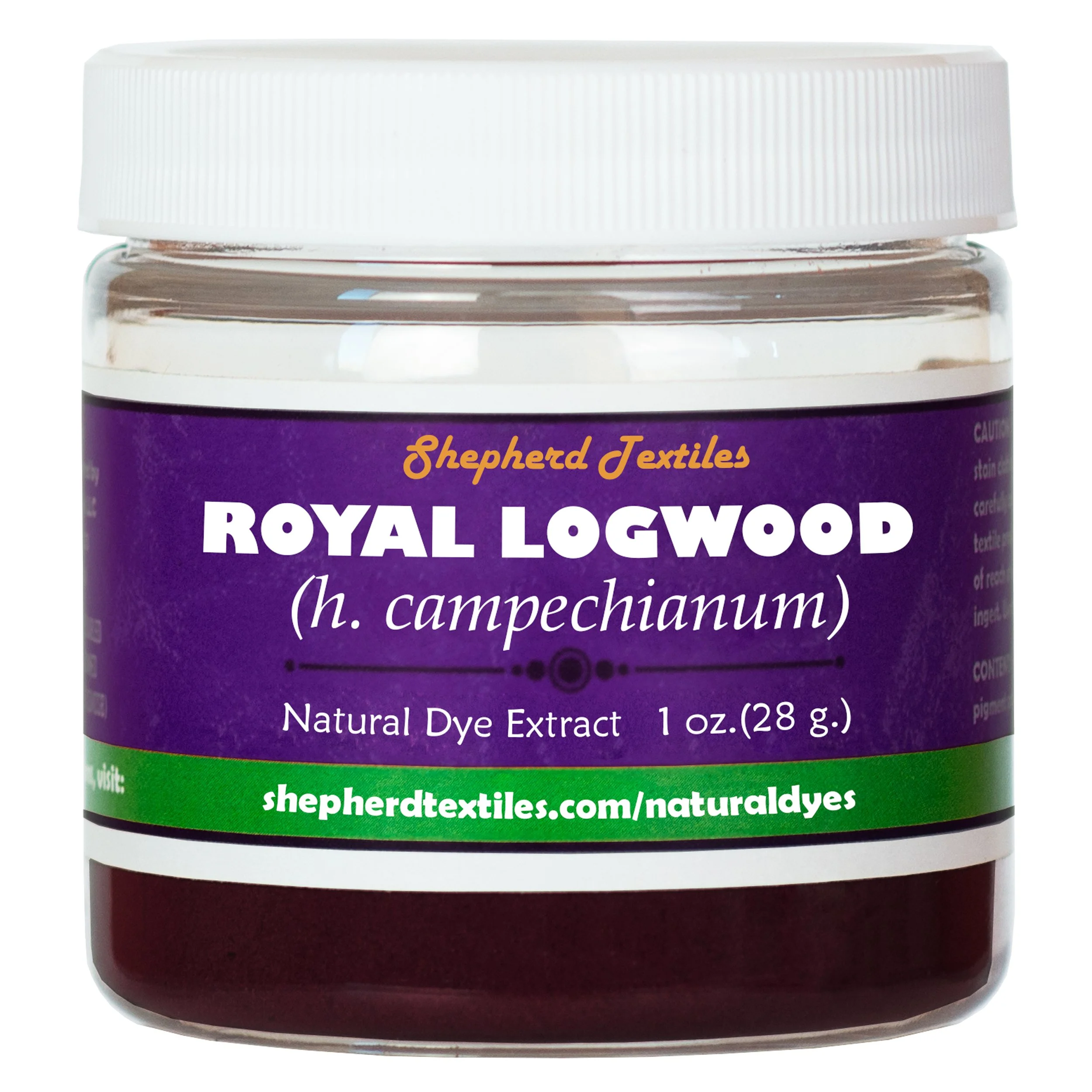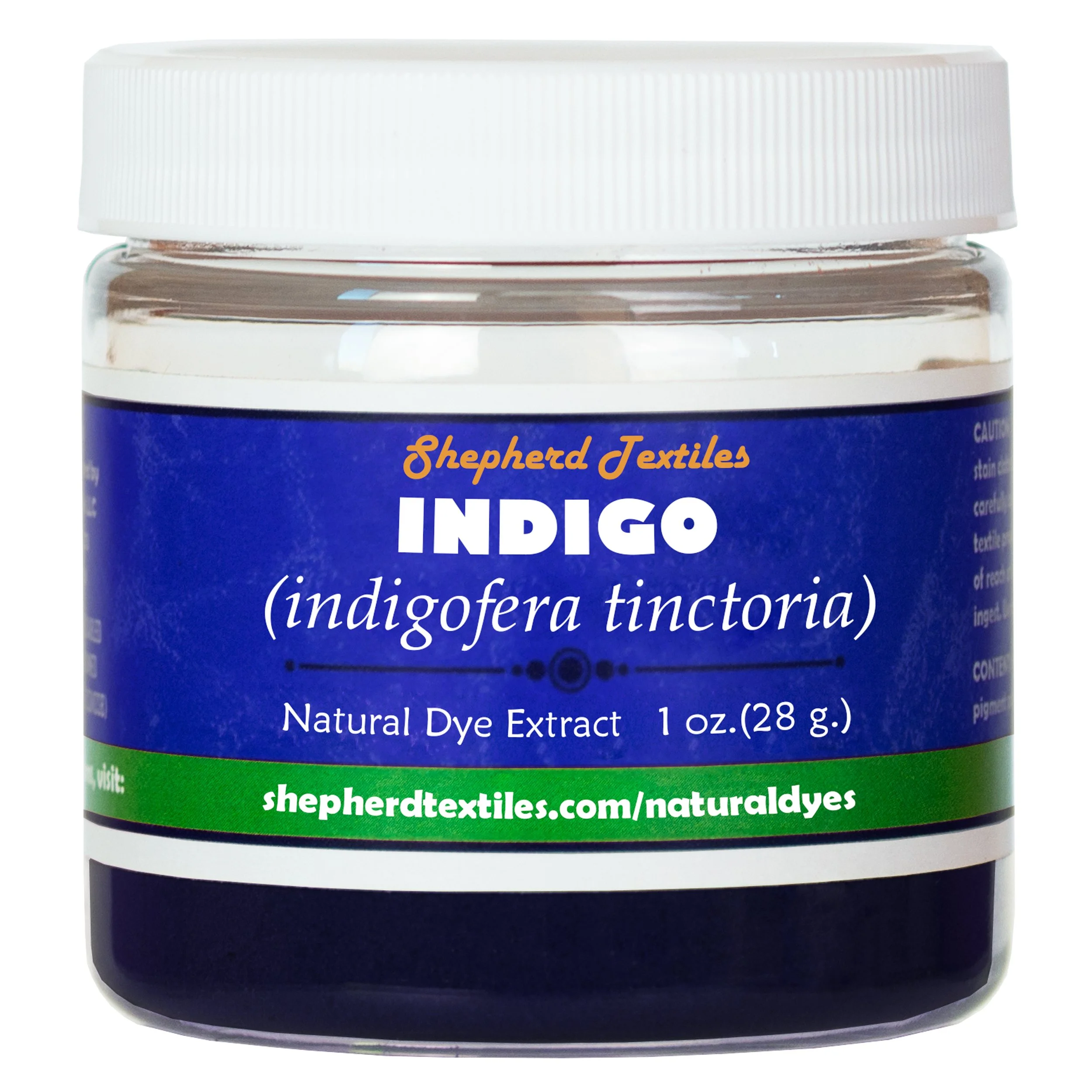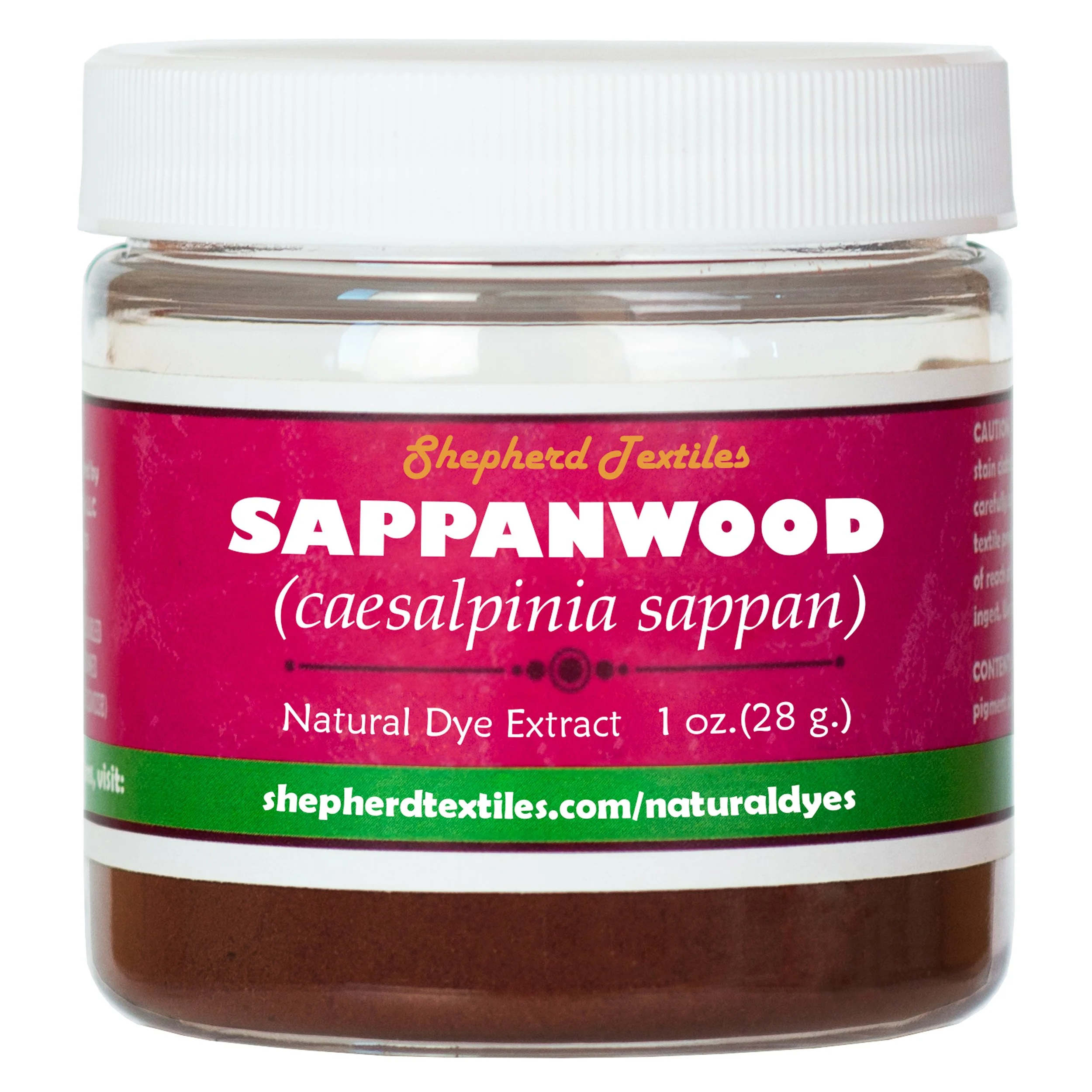Premium Natural Dye Extracts
Shepherd Textiles offers a range of more than 40 colorful textile dyes extracted from natural sources like roots, bark, leaves, flower petals, fruits, and resins. Our dyes are trusted by woolen mills, fashion designers, university laboratories, history museums, indie yarn makers, and countless artists and home dyers. Check out each page for helpful tips and recipes to make the most of our botanical colors.
A new form of cochineal extract rich in highly soluble carminic acid. For crimsons, scarlets, and lilacs on all natural fibers.
An older form of cochineal extract first described in the 17th century, carmine doesn’t hide its bright red shade.
Not the rhubarb you eat with strawberries. The roots of the Himalayan Rhubarb give deep golden colors and rich brick reds.
The classic natural brown dye, Cutch gives a range of sandy tans and even dark chocolate browns. High in tannins and color-fast.
One of the only natural blue dyes besides indigo comes from the fruit of the Cape Jasmine, a.k.a. the gardenia in your garden.
The bug that makes shellac also makes a red pigment to go with it. Dark merlots, rich burgundies, and all the colors of red wine.
The secret color of pollo asado and cheddar cheese. Use annatto for beautiful but ephemeral red-oranges on wool and cotton.
A Western wildflower that gives deep shades of pumpkin orange, perfect for warm autumn colors.
Fantastic mahogany and chocolate browns from the pressed and steamed leaves of an Indonesian evergreen.
Rich in warm ellagic tannins, pomegranate makes the perfect base for saddening with iron to get mossy slate grays.
Made in our own studio from a recipe dating to 1874, Lana Rosada Pink Cochineal Paste gives nature’s richest pinks.
A Korean dye extracted from gardenia seeds. Gives bright yellows on wool and cotton and exceptional golds on silk.
A tannin-rich hardwood from South America, quebracho gives a series of soft, sandy browns and beautiful fawn colors.
The perfect extract for cooks who forget to save their onion skins, Onion Peel gives mustard yellows, even without a mordant.
A rustic oak gall extract perfect for tanning cotton and linen fibers before mordanting them. Especially good with iron.
The winter treat that’s packed full of tannins. Use chestnut bark for soft, tan shades, or to pre-treat cotton so dyes look darker.
A special logwood extract formulated for deep indigo blues on wool, sky blues on cotton, and slate blues on everything else.
As much of a tannin as a pure dye, myrobalan gives fibers a warm, color-fast yellow before overdyeing with other colors.
An exceptional lac dye that produces burgundies, lilacs, and scarlets, Kusumi Lac might be the finest natural red on silk.
A classic dye from the south of France, Persian Berry gives warm yellows with hint of gold on protein fibers like wool and silk.
Bright canary yellows and neon oranges: Flavin™ is made from the buds of the pagoda tree and may be nature’s strongest yellow.
A traditional African dye, red sorghum produces deep, rusty red shades reminiscent of desert canyons and terracotta.
A European dye used as far back as the Iron Age, buckthorn bark gives warm golden yellow shades that shift to pink with an alkali.
An ancient dye with roots in the Pharaonic era of Egypt, henna gives sandy shades of brown and soft olive greens.
Flower power! Floral Green™ is a 100% flower-based natural dye blend that gives intense emerald greens on woolen fibers.
More than just a resin. The bark of the Gum Arabic Tree is rich in natural tannins, and it gives warm tans and khaki browns.
A refined oak gall extract containing only lightly-colored tannins. Ideal for dyeing cotton and linen bright and vivid hues.
A popular dye during the Late Middle Ages, this forgotten fustic dyes rich orange-yellow shades on all natural fibers.
A unique dye made from the tannins in unripe persimmons, kakishibu applies without heat and darkens in the sun.
Goldenrod flowers give soft yellows that shift to yummy sage and olive greens with the addition of a little iron.
A new and improved Gardenia Blue made from cape jasmine seeds, for ocean blue shades without a reduction vat.
The clearest natural tannin. Use it to pre-treat cotton and linen so other dyes attach better, without changing the final color.
Pure Natural Dyes
The raw materials of nature’s palette: wood chips, roots, leaves, even lichens. We’ve searched the globe to find the strongest natural dyestuffs that will give the richest colors on fibers and textiles. We import many of our dyes direct from the producers. Please click on a dye to view a guide that has background information, color recipes, and safety precautions.
Not the the neon green powder. Our crushed indigo leaf is so fresh it can be blended with ice to give clear sky blues.
The tree that built the West. Osage Oranges make tough living fences and produce a beautiful yellow from their heartwood.
Bright, luminous fuchsia from a humble lichen. Orchil was famous in the 19th century, and all but forgotten since.
Tannin-rich galls plucked from the branches of the Chinese sumac tree. Sadden with iron for deep, rich grays.
Careful, black walnut stains everything! We start with whole hulls foraged in Tennessee and grind them in our studio.
Strong, lightfast yellows on all natural fibers - weld was the favorite yellow of Continental dyers for many centuries.
A classic yellow dye from Korea that contains the same pigment as saffron. Time to try your own saffron-colored silk?
The heartwood of a tropical tree just dripping with purple. Change the mordant to get somber blues and inky blacks.
Chock-full of tannins, this South American hardwood gives golden browns on all natural fibers, including cotton.
A scraggly shrub from the high deserts of the Andes, rhatany gives beautiful shades of coral, rust, and auburn.
A weird, knobby fruit with a powerful orange pigment. Dyes wool and silk with shades of tangerine and flame.
Are you looking for clear golden yellows? Because the heartwood of Old Fustic is how you get clear golden yellows.
For the perfect “millenial pink.” Hand-crafted in small batches, because we can only eat so much guacamole.
Amur Cork does just one thing, but it does it really well: dye unmordanted silk brilliant shades of lemon yellow.
Famous for intense purples, with the right mordants logwood can also produce dark blues and deep black.
The root that frustrated and fascinated dyers for centuries. Check out our tips for perfect Turkish reds.
Create rich forest greens and dark olive greens, all by using the natural chlorophyll in mulberry leaves.
The strongest source of natural blue, but also one of the most complex to use. Read our guide to help get your indigo vat going.
Those beautiful spring flowers pack a punch! Dye natural fibers bright shades of lemon and sun yellow.
Yummy cherry reds, steel blues, and dark mulberry purples: Sappanwood has a range of hues just waiting to be explored.
The yellow of Medieval tapestries and Persian rugs. Grown organically in the Languedoc region of southern France.
From the heartwood of a tropical mulberry tree, Old Fustic gives rich, golden yellows that apply easily to all natural fibers.
The most powerful of the natural red dyes, and also the most complex. Read our guide for help getting true crimson.
A bug that dyes bright red? Our raw cochineal comes from Peru, and gives brilliant scarlets and maroons.
A dyebath that smells like incense? Red Sandalwood is a rare heartwood from South India that dyes a rich brick red.
One of nature’s most complex roots, alkanet gives lilacs and purples depending on the PH. Pairs well with vodka.
A great choice for dyers who work with cotton and linen, this one-step mordant for cellulose fibers gives bright, rich colors.
Rusty reds and eggplant purples from one of the most important dyes of the 18th and 19th centuries.


